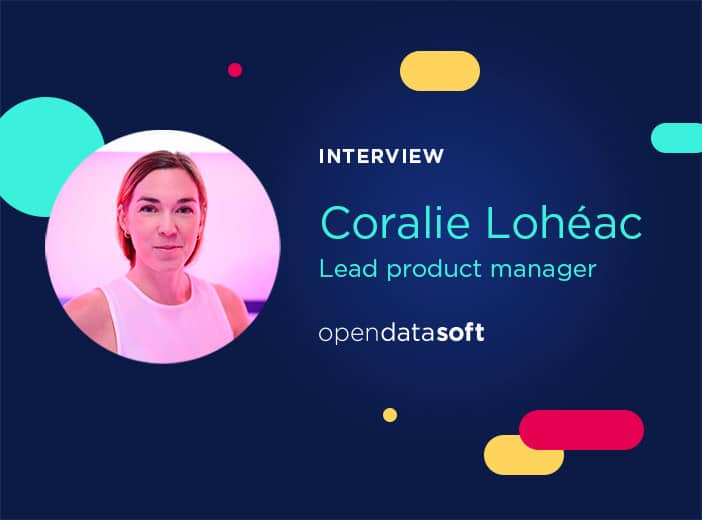Glossary
First-party, second-party and third-party data
First-party, second-party, and third-party data refer to the relationship between your company and the entity that has collected that data.
Data is a vital lever for making decisions and for improving the efficiency of companies. However the source of this data is important, for reasons as varied as trust and ensuring compliance. This is where the concept of first-party, second-party and third-party data comes in.
First-party data
Definition
First-party data is data collected first-hand. In other words, information the company collects directly from its audience (customers, website visitors and social media followers).
The term “first-party” refers to the person or company who collected the data, and who also intends to use it.
And since this information comes from consumers who are interested in the brand, it is much more reliable and relevant to the target audience. This data makes it possible to carry out predictive analytics and/or to better understand user behavior.
The different types of data
First-party data includes a wide variety of information:
- Profile data: this is socio-demographic data. This is the first step in identifying the target.
- Behavioral data: this is generally provided by the target’s actions on the website, apps, social networks or when using the product.
- Customer feedback: people who buy your products and/or services will give you their feedback (both positive and negative). This then allows you to make improvements and to focus on your strengths.
Collecting first-party data
First-party data can come from a wide variety of sources. Companies have traditionally used surveys, satisfaction questionnaires, or have simply met their prospects and customers in person. Data can also come from internal systems, such as finance or CRM.
While these methods of collecting data are still useful, they are no longer the only ways to collect data. First-party data is often collected digitally through the use of a pixel on the company’s website or social networks.
This pixel makes it possible to answer the following questions:
- What is the profile of my visitors and my customers?
- How long do users stay on the website?
- What products are they looking at?
- Are they ready to buy?
- Do they comment on social media posts?
- Do they fill out surveys?
- Do they upload documents?
All of this information helps you understand the behavior and actions of your target.
Businesses must then store and analyze this data within their CRM or a CDP (customer data platform).
Using first-party data
First-party data is primarily used in a marketing context for targeting audiences. Companies use this information to create effective advertisements, to run nurturing activities and/or to improve their sales process.
The purpose is to encourage conversions. First-party data is also a very effective means of refining the company’s definition of the ideal customer.
It is therefore essential to master the use of first-party data. As data is collected directly from customers and prospects, first-party data is totally within a company’s control, making it more reliable. However, it does need to be treated and stored in line with privacy regulations, such as the GDPR/CCPA and cookie legislation. That means gaining permission for it to be used within marketing activities.
Second-party data
Definition
Unlike first-party data, second-party data is information you didn’t collect yourself. Essentially it is secondhand, and is normally provided by a trusted partner that the company has a direct relationship with. For example, a software company might share data it has collected with a reseller partner to help it sell its products. This data is second-party data from the point of view of the reseller, as it did not directly collect it.
As it is not collected directly by an organization, it can be less useful, as it may not provide the right insights that you are looking for. However, as it comes from a trusted source, it is more trustworthy than third-party data (see below).
Collecting second-party data
This data is collected in the same way as first-party data (surveys, feedback, internal systems), but is then shared or sold, making it second-party data.
Using second-party data
As with first-party data, second-party data can be used to create ads, nurture leads, and remove friction in the customer journey.
However, the difference is that second-party data can provide new perspectives on your customers. This highlights new opportunities and trends that may help drive sales or customer engagement.
Third-party data
Definition
Third-party data is information collected by data merchants. This data is then sold to companies that need data to define or improve their advertising, lead generation or targeting strategies.
Unlike the previous forms of data collection, data providers have no connection with the customer or with the company.
This method offers the advantage of saving time. Data merchants specialize in data. They are therefore experts in the collection and segmentation of information. They also draw upon large samples of consumers. This makes it possible to benefit from a much wider range of data.
However, it is advisable to use this strategy as a supplement to first-party and second-party data. First-party data is more useful in defining the target.
Collecting third-party data
Data providers use the same methods for data collection. These methods include surveys, interviews, forms, etc.
But in this case, the idea is to obtain information from a wide audience. Therefore, research is carried out on random samples, and not just on the target of a particular company.
And, if you use a combination of data, it’s a good idea to compare the data collected by each method. This will allow you to see if the behaviors between different groups are similar.
Using third-party data
Because third-party data is broader, it is especially effective for lead generation. It allows you to find targets who are not familiar with your company. The main idea here is to expand your business.
That being said, third-party data can also be used for retargeting or advertising. Especially if it is combined with first-party data.
Whether you are using first-party, second-party or third-party data, you should handle and analyze your data carefully and intelligently in order to create value.
Learn more

Blog
From data chaos to data products: Big Data LDN
Maximizing value from data is a key objective for organizations looking to improve performance, boost innovation, and increase efficiency. In the run up to Big Data LDN we explain the importance of data products and data product marketplaces to delivering data value.

Blog
Data virtualization: securely share your data on your marketplace, without duplicating or moving it
Data virtualization transforms the way organizations share and use their data. It allows data from external sources to be explored and consumed securely, without the need for duplication. In this article, Coralie Lohéac, Lead Product Manager at Opendatasoft, explains how deploying data virtualization within a data marketplace opens up new perspectives for data sharing and value creation within organizations.

Blog
Transforming public data into value – lessons from Australia
Cities and municipalities create huge volumes of data - but ensuring it is used effectively by every department to engage stakeholders and build trust can be difficult. Using real-world examples from a new ebook published by our partner Peclet, we explain how municipalities can truly turn data into value.
